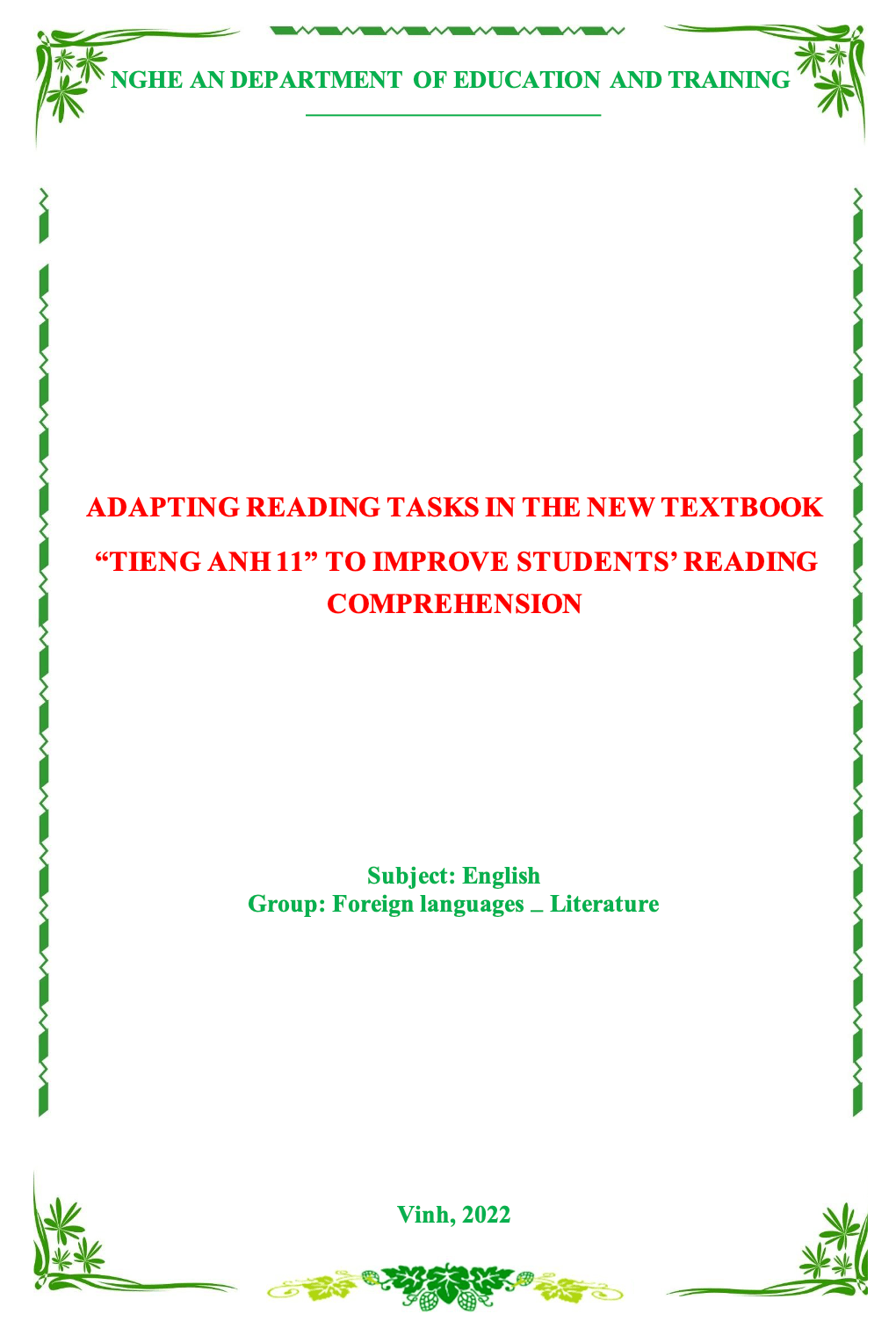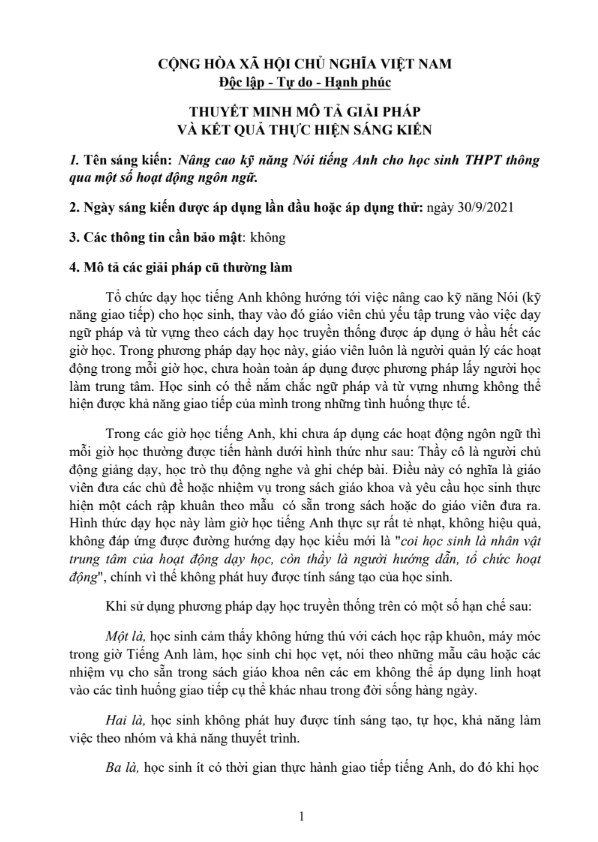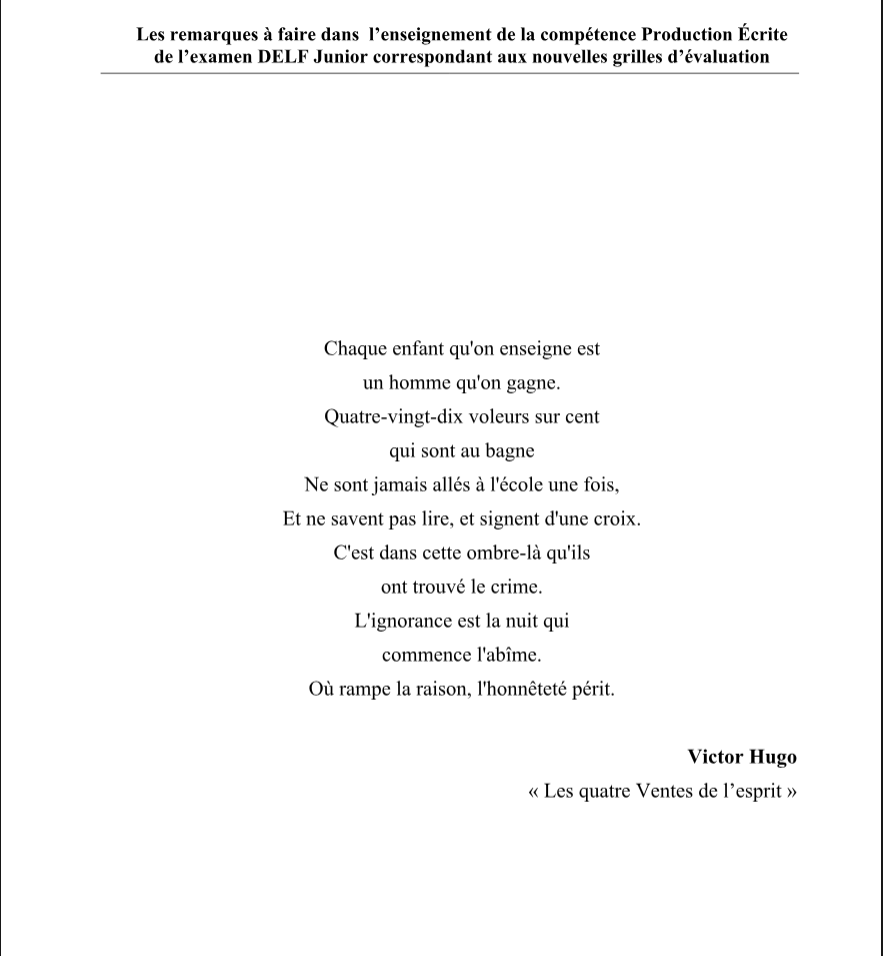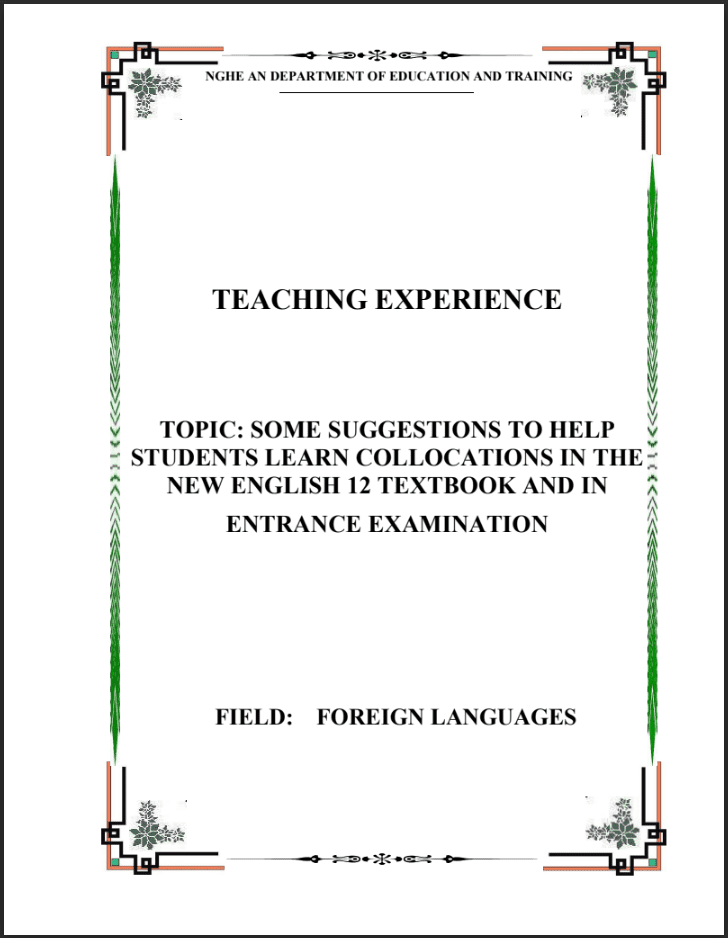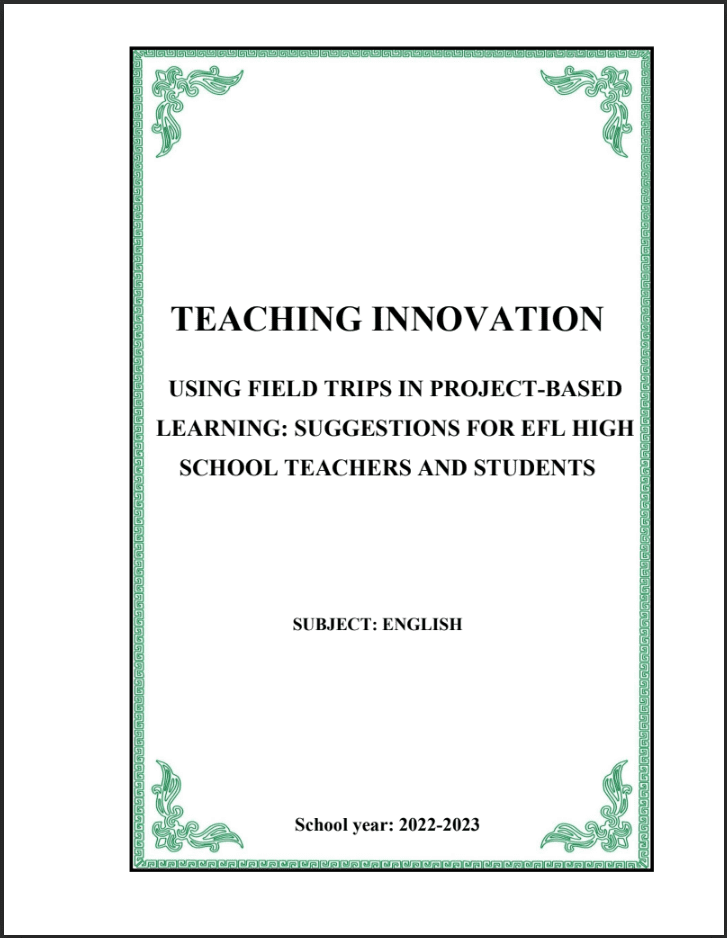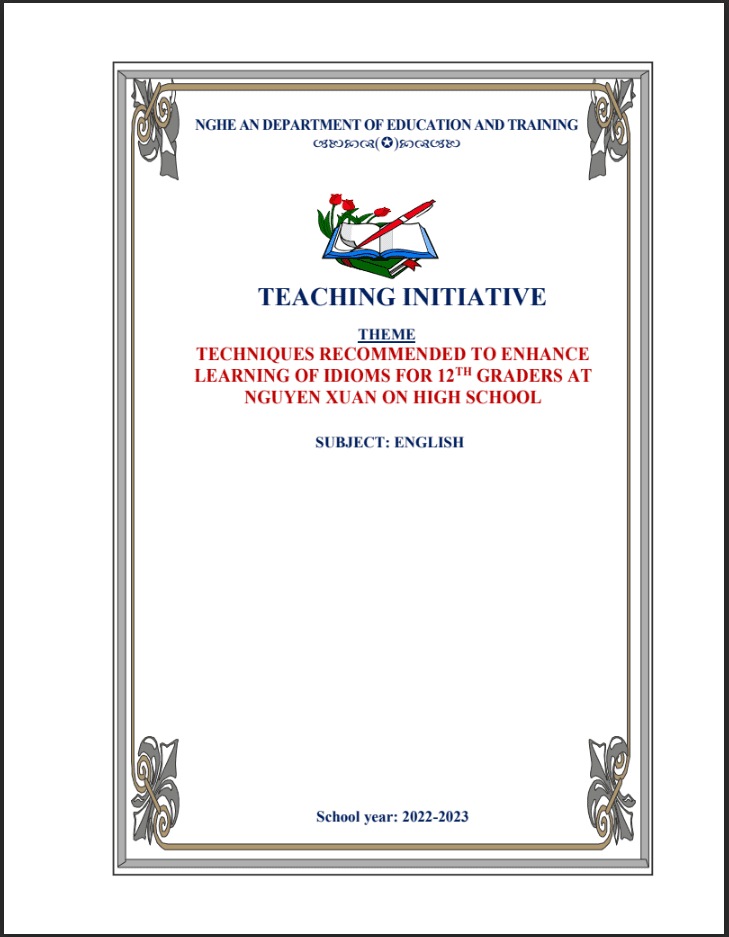SKKN Adapting reading tasks in the new textbook “Tieng Anh 11” to improve students’ reading comprehension
- Mã tài liệu: MP0033 Copy
| Môn: | Tiếng anh |
| Lớp: | 11 |
| Bộ sách: | |
| Lượt xem: | 904 |
| Lượt tải: | 8 |
| Số trang: | 56 |
| Tác giả: | Phạm Thị Khuê |
| Trình độ chuyên môn: | Thạc sĩ giáo dục |
| Đơn vị công tác: | THPT Lê Lợi |
| Năm viết: | 2021-2022 |
| Số trang: | 56 |
| Tác giả: | Phạm Thị Khuê |
| Trình độ chuyên môn: | Thạc sĩ giáo dục |
| Đơn vị công tác: | THPT Lê Lợi |
| Năm viết: | 2021-2022 |
Sáng kiến kinh nghiệm “SKKN Adapting reading tasks in the new textbook “Tieng Anh 11” to improve students’ reading comprehension” :
Suggested adaptations for some reading tasks in the new textbook
The first thing needs to be made clear is that the exercise of matching words and their definitions, which appear in all of the reading lessons from unit 6 to unit 10, will not be taught in class as a separate activity in the same order as they are in the book
Mô tả sản phẩm
PART I: INTRODUCTION
- Rationale
Of the four language skills, reading seems to have received a great deal of attention from researchers in second language teaching. It is considered “the most important of the four skills in a second language, particularly in English as a second or foreign language” (Carrell, 1981:1). Despite its importance, many teachers of English at high schools find it difficult to get students’ enthusiasm in reading texts. From students’ responses to the survey questions, it can be seen that many of the students feel frustrated at long reading texts with unfamiliar words. Besides, many of them admit that they do not have necessary background knowledge about the topic of the reading texts or even they do not like the topic itself. Consequently, they are not willing to learn reading skill as well as carry out the reading tasks given in the textbook.
Another factor that should be considered when we mention the quality of teaching and learning reading skill at high school is the reading tasks given in the textbook. It can be easily noticed that some of the reading tasks are similarly designed in different units, namely answering the questions, choosing the best title, matching words and phrases with their definitions. This, to some extent, causes repetition and boredom to students.
In addition, there is a lack of teachers’ flexibility in creating a suitable learning environment for students in class. Statistics collected from the questionnaire reveal that a large number of students are not confident enough to perform all the given tasks by themselves. Instead, they often rely on their friends as well as reference books for correct answers. As a consequence, students cannot improve their reading comprehension during the process of learning reading skills. In addition, most of the students involved in the survey claim that they prefer working in groups of students with the same level of proficiency in reading classes. Thus, flexible work arrangements in reading class should be taken into consideration to boost students’ motivation and the quality of teaching and learning reading skills.
Last but not least, the outbreak of COVID -19 has forced schools to utilize new ways of learning and teaching, including formal and virtual classes. Therefore, adaptations for textbook lessons with the aim of making them easier and more suitable for students’ competence are necessary to reduce their learning pressure.
Related to these problems, this study was carried out, entitling: Adapting reading tasks in the new textbook “Tieng Anh 11” to improve students’ reading comprehension.
- Aims of the study
The study aims at suggesting adaptations of some reading tasks given in the new textbook “Tieng Anh 11” to enhance the 11th graders’ reading comprehension.
PART II: CONTENT
- THEORETICAL BACKGROUND
- Reading skills
Reading is known as a receptive process that connected the reader with the text, making comprehension.
Harmer (2001: 153) states that “reading is an exercise dominated by the eyes and the brain. The eyes receive messages and the brain then has to work out the significance of these messages”. Thus, although there are different ideas about reading skills, they all focus on two actions: studying with eyes and comprehending with brains, of which the latter is more important since the final goal of reading instruction is comprehension. The readers do not simply look at and understand the meaning of what is written but also read authors’ thinking.
In terms of skills required to learn reading effectively, there are many skills in the reading process, namely scanning, skimming, summarizing, paraphrasing, etc. However, at the level of high school students, scanning and skimming are two most important ones that matches with their learning ability and goals.
- Definition of reading comprehension
In the context of language learning, according to Ur (1996:34), “reading means reading and understanding”. In this sense, if a student can read the words but doesn’t know what they mean, it is not reading but “decoding”. Sharing this view, Karlin and Kartin (1988:2) also express that “reading without reading comprehension is meaningless.”. In other words, reading comprehension is a complicated process in which readers use their own knowledge, experiences and strategies to understand the content of the text. Therefore, how to assist students in having efficient reading comprehension is considered to be the most challenging task in teaching reading.
- Adapting textbooks
- What is textbook adaptation?
Adapting textbook activities is not just something teachers should do as the need arises but also for appealing to the lower, middle and strong student levels. Textbook adaptation is performed to make textbook lessons more communicative and incorporate authentic textbook into the lessons. Adapting is the ability to create the textbook that introduces and integrates skills in a lively, enjoyable and productive format.
- Principles and techniques for adapting textbooks
Despite the great effort that textbook writers make to meet the needs of the intended users, textbooks are subject to adaptation when they are actually used in the classroom. McDonough and Shaw (1993:83) propose that textbooks are internally coherent although they may be, they may not be entirely applicable. Although most classroom teachers will not be involved in the production of textbooks, all teachers have the responsibility for textbook evaluation, selection and adaptation. It is undeniable that adapting textbook allows teachers to achieve more compatibility and fitness between the textbook and the teaching environment, and therefore maximize the value of the book for the benefit of their particular learners and for the most effective teaching outcomes to achieve. Maley (1998:281) suggested the following techniques to adapt textbook:
- Omission: the teacher leaves out things seemed inappropriate, offensive, unproductive, etc., for the particular group.
- Addition: where there seems to be inadequate coverage, teachers may decide to add to textbooks, either in the form of texts or exercise material.
- Reduction: where the teacher shortens an activity to give it less weight or emphasis.
- Extension: where an activity is lengthened in order to give it an additional dimension. (For example, a vocabulary activity is extended to draw attention to some syntactic patterning.)
- Rewriting/modification: teacher may occasionally decide to rewrite material, especially exercise material, to make it more appropriate, more “communicative”, more demanding, more accessible to their students, etc.
- Replacement: text or exercise material which is considered inadequate, for whatever reason, may be replaced by more suitable material. This is often culled from other resource textbook.
- Re-ordering: teachers may decide that the order in which the textbooks are presented is not suitable for their students. They can then decide to plot a different course through the textbooks from the one the writer has laid down.
- Branching: teachers may decide to add options to the existing activity or to suggest alternative pathways through the activities.
Textbook adaptation can be done at three levels. The first level is macro adaptation, which is ideally done before the language program begins. After comparing what is covered in a textbook and what is required by the syllabus or examination, the teacher may find that certain areas or even whole units of the book can be omitted, and certain contents need to be supplemented.
TÀI LIỆU LIÊN QUAN
- 7
- 105
- 1
- [product_views]
- 5
- 173
- 2
- [product_views]
- 4
- 165
- 3
- [product_views]
- 4
- 129
- 4
- [product_views]
100.000 ₫
- 6
- 434
- 5
- [product_views]
100.000 ₫
- 2
- 507
- 6
- [product_views]
100.000 ₫
- 9
- 546
- 7
- [product_views]
100.000 ₫
- 4
- 409
- 8
- [product_views]
100.000 ₫
- 2
- 595
- 9
- [product_views]
100.000 ₫
- 0
- 538
- 10
- [product_views]

